4 European Events Harmonizing Art, Nature, and Techno Music
Techno and electronic music have always shared an intimate relationship with art, intertwining rhythms, beats, and melodies with visual expressions...
Celia Leiva Otto 30 May 2024
Boys and men posing with plants and flowers is a popular theme in art. The concept was revisited on Instagram, a social media platform on the account @boyswithplants. Although Instagram photographs focus on plants for their aesthetic appeal, the paintings use them as personal and professional symbolism.
Flowers and plants in art fulfill aesthetic and symbolic meanings. In Western classical mythology and Christianity, plants were used as metaphors for virtue and vice, and flowers represented chastity and purity. Beyond the sacred themes, plants were also valued for their medicinal properties. Also known as botanical imagery, from the 15th and 16th centuries, there was an increasing interest in the natural world and its realistic depiction by artists.
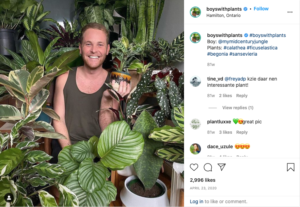
Thanks to a project started in 2016 by Scott Cain, a graphic designer, and ‘plant guru’ on Instagram called @boyswithplants or Boys with Plants, the concept has gained much popularity on social media. The account is a collection of photographs of men posing next to their carefully nurtured exotic plants. Although the plants are the focus of the photographs, it is difficult to overlook their good-looking owners. The collection is also available as a coffee-table book entitled, Boys with Plants: 50 Boys and the Plants They Love (2019). However, men and boys posing alongside plants and flowers is not a new concept; it already exists in portrait paintings.
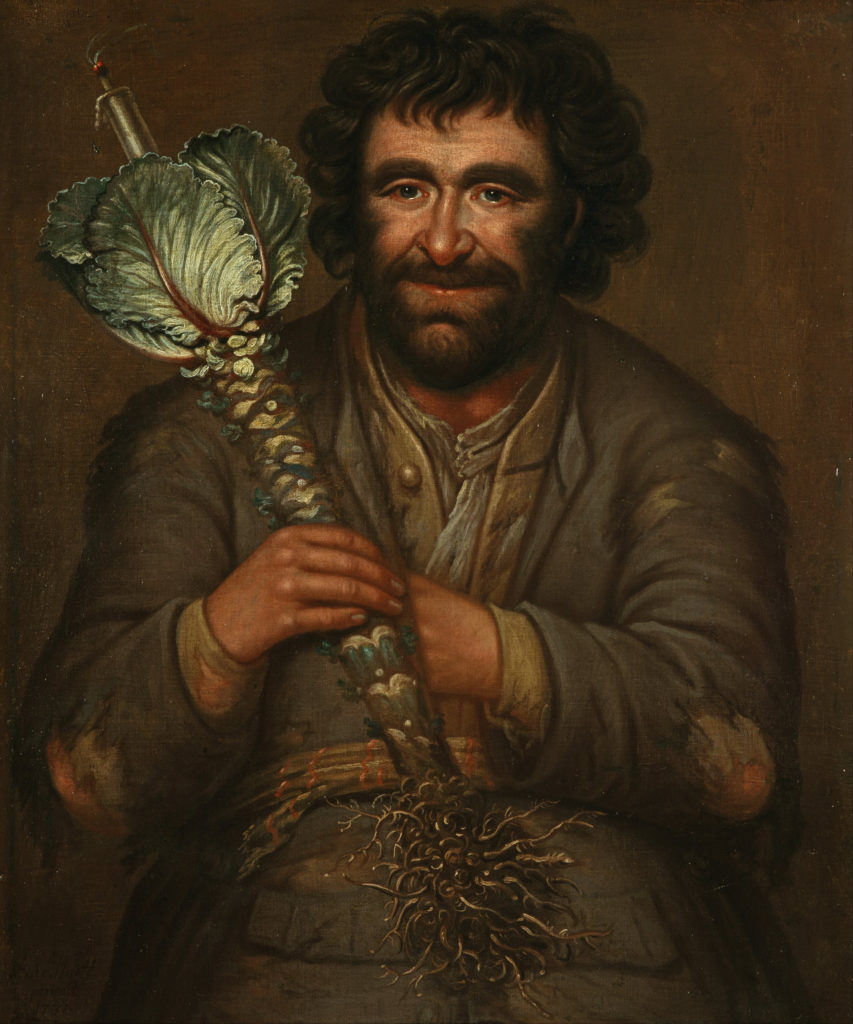
Albrecht Dürer’s (1471-1528) Self-portrait with Holly (Self Portrait with a Thistle), 1493, is one of the very first independent self-portraits in Western painting. After serving his apprenticeship in his hometown of Nuremberg, the young Dürer made a guild tour through southern Germany. The self-portrait was probably painted in Strasbourg.
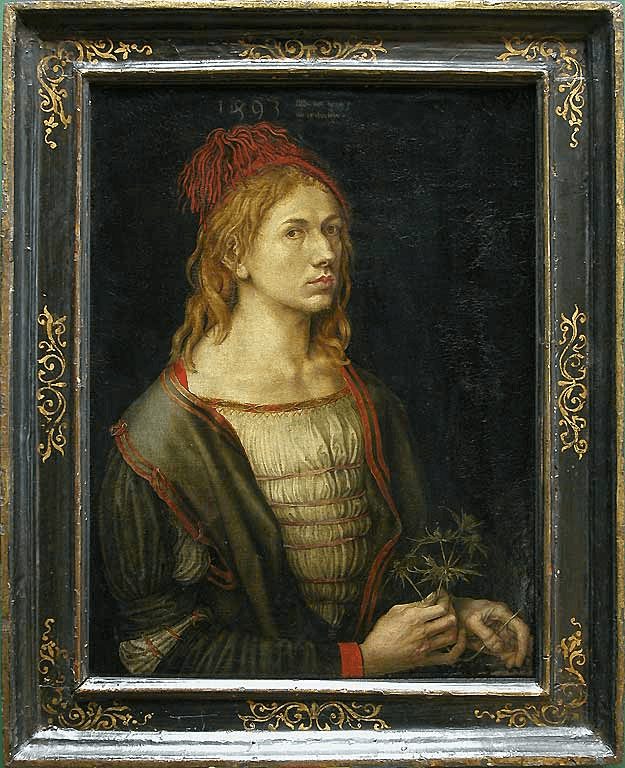
The Self-portrait with Holly (Self Portrait with a Thistle) takes the form of a bust seen from a three-quarters angle against a dark background, and its composition is entirely consistent with the painting tradition of the time. The pose is a little awkward because the painter had to constantly look at himself in the mirror.
He is wearing sophisticated clothes: a small red cap with pompoms and an elegant overgarment of bluish-gray which contrasts against the whiteness of the inner garment. The face still has some childish features as seen in his earlier self-portrait painted at the age of 13, but the manly neck, the strong nose, and the vigorous hands are already those of an adult. Dürer is 22 years old in the portrait. His excellence as an engraver and training as a goldsmith is evident in the almost metallic fineness of detail, seen in the prickles of the thistle.
One interpretation of the thistle held by the artist came from a German scholar, Johann Wolfgang von Goethe (1749-1832) who saw it as an engagement present for Agnes Frey, whom Dürer was going to marry in 1494. In German, the thistle is called ‘Mannstreu’, which means a husband’s fidelity.
The other interpretation, owing to the inscription on the painting next to the date, “Things happen to me as it is written on high” suggests the thistle is an allusion to Christ’s Passion or more specifically the spikes on the crown of thorns. In this case, the portrait would be a forerunner of his self-portrait of 1500 in which Dürer appears as the Salvator Mundi, the Savior of the World, a Christ-like figure crowned with the glory of God. Regardless of the interpretations, the self-portrait combines the artist’s pride with humility, making Dürer the first painter of the German Renaissance.
Anthony van Dyck (1599-1641) was a Flemish Baroque artist from Antwerp. Self-Portrait with a Sunflower, 1632, was painted by van Dyck at the height of his fame and popularity while serving as a principal painter in the court of Charles I of England. Van Dyck’s ability to capture the likeness of his models made him quite an authority in painting portraits.
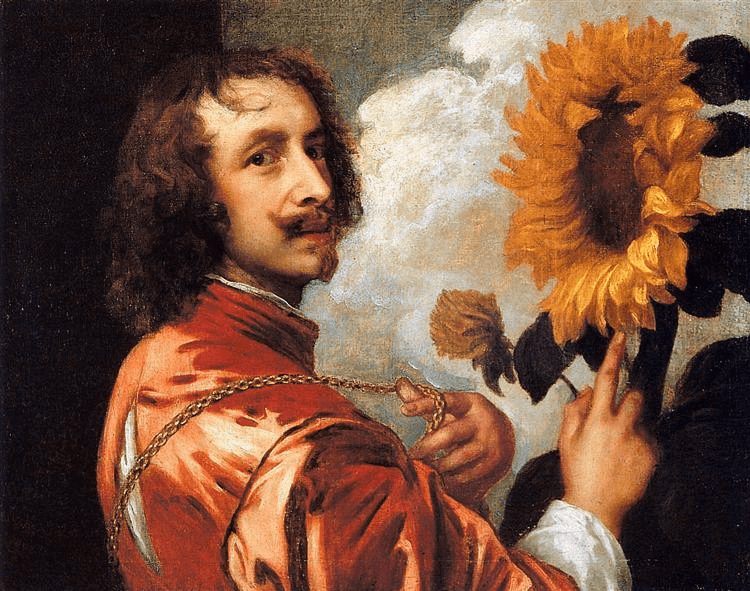
The portrait features the artist looking over his shoulder at the viewer as if startled by the presence of an onlooker. His right hand is touching the lower petals of a sunflower, which is slightly bigger than him. His left index finger and thumb hold a gold chain that extends across his right shoulder and down his back. This is a visual trick of calling attention to the gold chain and the message it portrays. The chain is understood to be a gift the artist received from his patron, Charles I. The chain holds a medal with the king’s likeness on it but is concealed by the artist’s right arm sleeve. He is portrayed to be outdoors in nature, as seen by the clouds in the background. He is clothed in a richly-dyed pink overcoat with a white shirt visible on his collar, shirt cuffs, and a slender slit on his back.
The light source at the bottom left corner is illuminating the outer petals of the sunflower. This gives the visual effect of the sunflower ‘shining’ on the painter’s face in approval. Anthony van Dyck was known for capturing his own likeness on canvas; his unique style of keeping facial hair was called Van Dyck beard or ‘Vandyke’. It was thought to have a regal and stately appearance.
Sunflowers were imported to Europe from Peru in 1569 by the Spaniards. For a century, they were grown in gardens out of curiosity. Sunflowers were generally understood as the symbol of devotion and fidelity for how they face the sun, a heavenly body, a symbol of the Creator, and monarchy. Although van Dyck never stated it, he was devoted and loyal to Charles I. Later, in the early 1640s, the portrait was used during the English Civil War as a loosely defined propaganda piece, persuading citizens to join arms for a royalist allegiance, and successfully did so in uniting the war-torn kingdom.
Prince Sniffing a Rose (Prince holding flower), 1700, is a Deccani painting of a young prince enjoying the fragrance of a rose in the tranquillity of a garden. He is wearing a red and gold turban and a cream-colored ‘jama’ or robe with purple irises. The prince is surrounded by flowering plants, butterflies, and birds.
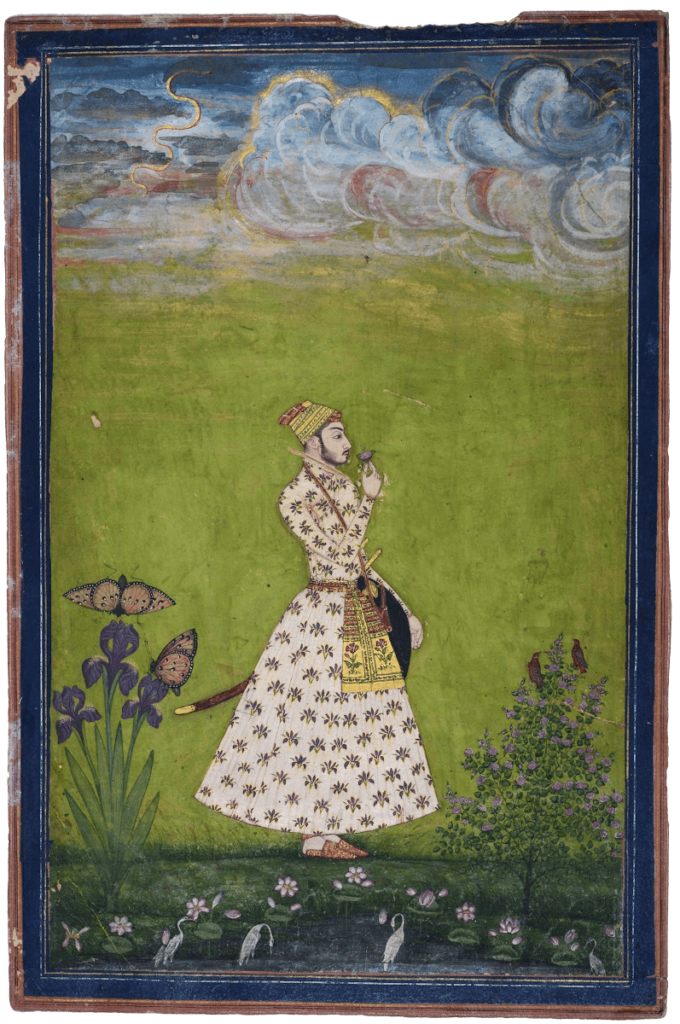
Though the painting is not inscribed, it is likely to be the portrait of Prince Bidar Bakht, son of Azam Shah and the favorite grandson of the Mughal emperor Aurangzeb. He was the Governor of Malwa and looked after the Deccani administration for a few years after the siege of Golconda. When the province of Gujarat was invaded by the Marathas, he was ordered by Aurangzeb to leave Deccan and save Gujarat. In the war of succession that broke out after the death of Aurangzeb, Bidar Bakht fought alongside his father against Prince Muazzam. Both father and son died in the Battle of Jajau near Agra in 1707.
Deccani paintings are known for the brilliance of color, the sophistication and artistry of composition, and a general air of decadent luxury. Symmetry plays an important role in Deccani miniature paintings; in the Prince Sniffing a Rose two butterflies on the right side are balanced by two birds on the left side of the painting. There are exactly four cranes near the feet of the prince, two on either side. The central position of the prince refers to his role as a ruler. He seeks harmony as well as ensures harmony. However, the tranquillity of the garden is contrasted against the turbulent sky which is painted in swirls of blue, gray, white, and gold. Perhaps, alluding to the dangers and threats looming over those in power.
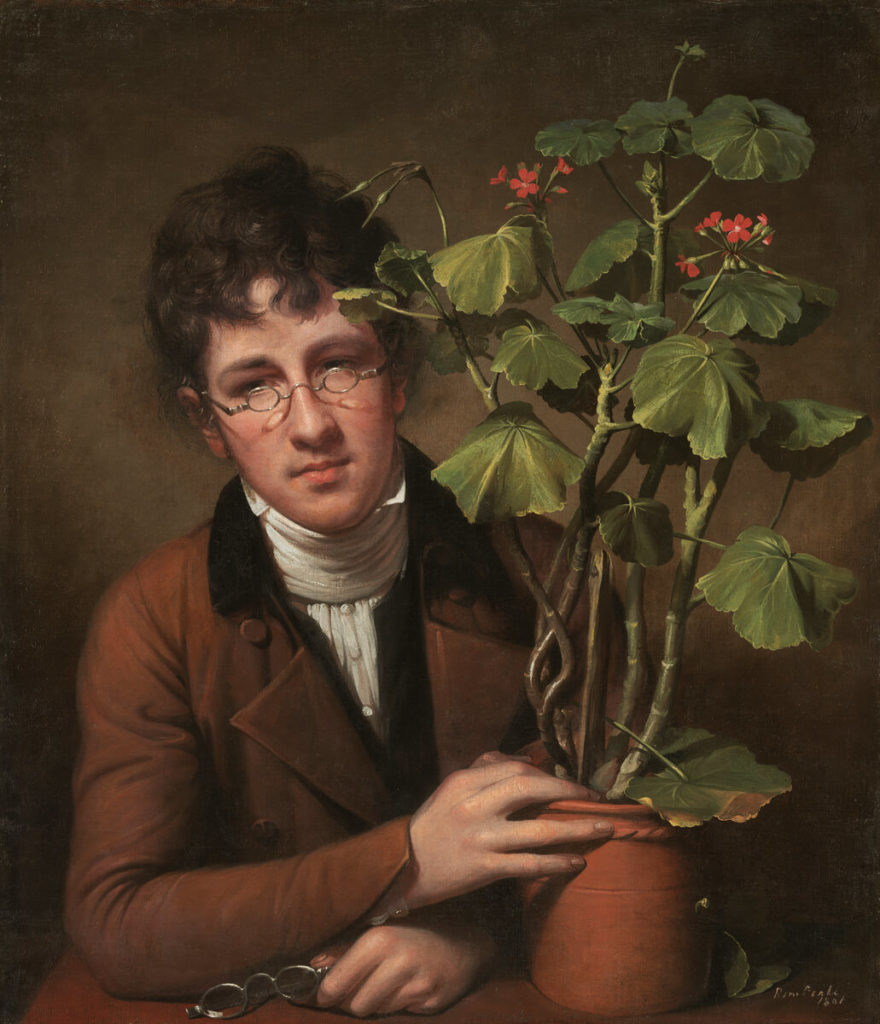
Named after the 17th-century Dutch painter and engraver Rembrandt van Rijn, Peale (1778–1860) was an American artist and museum keeper. As a prolific portrait painter, he was especially known for his portraits of Presidents: George Washington and Thomas Jefferson. In 1826 he helped found the National Academy of Design in New York City.
At the age of 23, Peale painted this portrait of his younger brother, Rubens. Rubens Peale was 17 years old when he posed for this portrait, loved gardening, and became an accomplished botanist in his life. Painted in Philadephia, the painting could be described as a ‘double portrait’; the geranium plant, that Rubens Peale is holding was the first specimen of this plant ever grown in the New World. Rubens Peale with a Geranium, 1801, is an example of unaffected naturalism: clear and firm drawing, and intense devotion to details for which Peale was known.
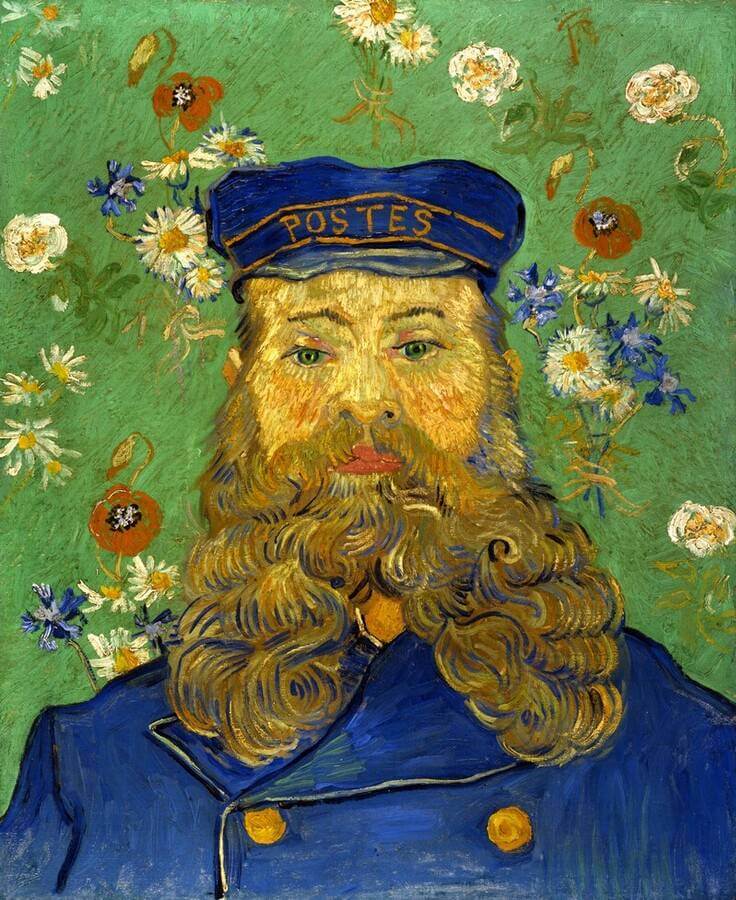
This Portrait of Joseph Roulin, 1889, is one of the six portraits painted by Van Gogh (1853-1890) of his close friend, a postal employee in the southern French town of Arles. Between August 1888 and April 1889, he painted six consecutive portraits of Joseph, three of which had flowers in the background. In 1888, Van Gogh moved to Arles, hoping to create an artists’ cooperative but the plan never came to fruition, and the artist became lonely and isolated. He found comfort and companionship with the Roulin family. In a letter to Theo, his brother, Van Gogh describes him as,
a man who is not bitter, not melancholy, not perfect, not happy and also not always perfectly honest. But such a good fellow, so wise, so feeling and so faithful.
Vincent Van Gogh, Kröller-Müller Museum, The Netherlands.
The stylized face and full beard of Joseph are contrasted against the fairly realistic depiction of summer flowers, poppies, cornflowers, daisies, and roses. Van Gogh applied the paint with his characteristic quick and fluent brushstrokes. He painted no fewer than twenty portraits of the Roulin family.
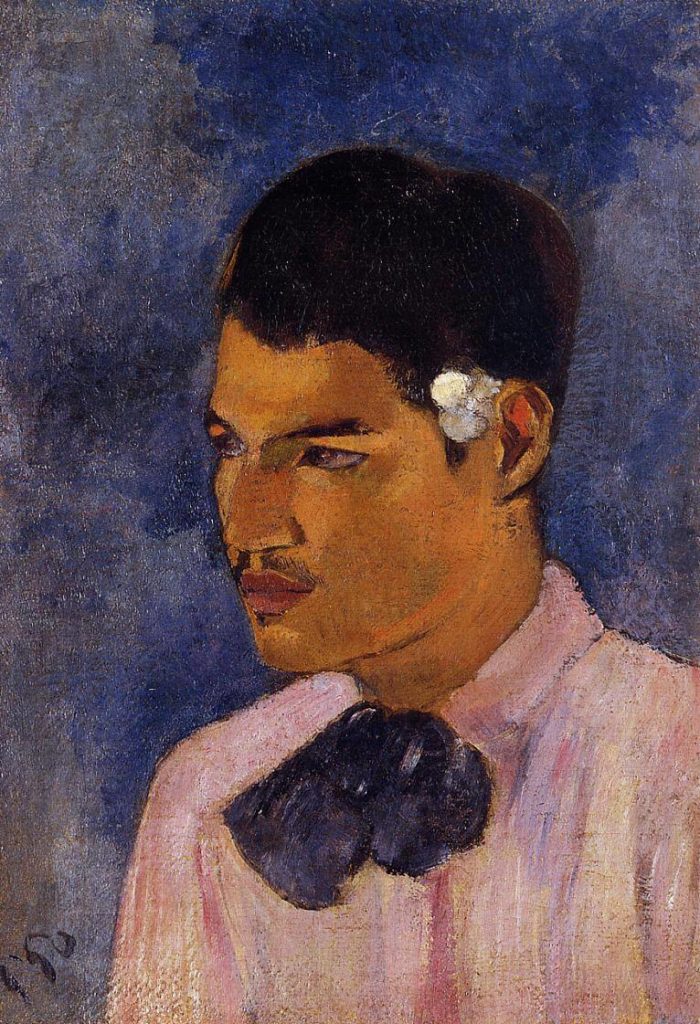
Another boy with a plant was portrayed by Paul Gauguin (1848-1903). He was a French Post-Impressionist artist. His work was influential to the French avant-garde and many modern artists like Pablo Picasso and Henri Matisse. Gauguin was an important figure in the Symbolist movement as a painter, sculptor, printmaker, ceramist, and writer. Influenced by the cloisonné style, Gauguin preferred Privitivism and a return to the pastoral. He was also an influential proponent of wood engraving and woodcuts as art forms. Towards the end of his life, he spent ten years in French Polynesia where he painted the local people and landscapes.
Young Man with a Flower Behind his Ear, 1891, is the portrait of a young man clad in a pink European blouse and loose cravat, with the native adornment of a small white tiaré blossom tucked over his left ear. It was one of the first paintings, Gauguin completed after arriving in Tahiti in 1891. Gauguin painted this portrait as a tribute to the young man called Jotefa, with whom he became acquainted during his initial months in Tahiti.
Moving to Tahiti was a profoundly transformative event for the artist, both personally and professionally in which this young man served as a catalyst and an invaluable teacher. He had led Gauguin through the exotic landscape of the island in search of wood for wooden sculptures. As a result, Gauguin discovered the breakthrough he was seeking as an artist: to completely immerse himself in the indigenous culture and become a Ma’ohi.
Artists often used plants and flowers in paintings to reflect on their personal and professional journeys. A thistle and sunflower may represent fidelity to another person, a monarch, or God. There are also portraits of others, the artists’ admired, the plants and flowers in them symbolizing friendship, beauty, and gratitude.
DailyArt Magazine needs your support. Every contribution, however big or small, is very valuable for our future. Thanks to it, we will be able to sustain and grow the Magazine. Thank you for your help!